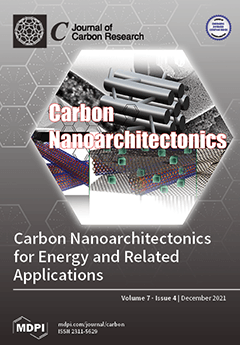Open AccessArticle
Activated Carbon Impregnated with Elementary Iodine: Applications against Virus- and Bacteria-Related Issues
by
Yuri Natori, Yoshiaki Kinase, Norihiro Ikemoto, Fabio Spaziani, Tsutomu Kojima, Hitomi Kakuta, Junko Fujita, Kazuyuki Someya, Katsuyoshi Tatenuma, Toshiyo Yabuta, Hiroki Takakuwa and Koichi Otsuki
Cited by 6 | Viewed by 6419
Abstract
An iodine-doped activated carbon (named IodAC) was developed by adsorbing molecular iodine (I
2) on commercially available activated carbon (AC). Iodine was selected with the purpose to add its well-known antibacterial and antiviral properties to the AC and in order to produce
[...] Read more.
An iodine-doped activated carbon (named IodAC) was developed by adsorbing molecular iodine (I
2) on commercially available activated carbon (AC). Iodine was selected with the purpose to add its well-known antibacterial and antiviral properties to the AC and in order to produce an innovative material for environmental pathogens control and for healthcare-related applications. The impregnation method achieved the goal of strongly adsorbing iodine on the AC surface, since both volatility and water solubility resulted to be negligible, and therefore it did not affect the stability of the material. An antibacterial test (on
Escherichia coli) and an antiviral test (on an avian influenza strain) were conducted, showing the effectiveness of IodAC against the pathogens. In addition, IodAC was also compared to slaked lime (a material widely used for disinfection of outdoor spaces and livestock farming areas). The data proved the performance of IodAC against virus and bacteria and also evidenced a more stable and long-lasting disinfecting power of IodAC compared to slaked lime, the later reacting with carbon dioxide and suffering a gradually decrease of its disinfectant power; such drawback does not affect IodAC. Overall, the presented results show that IodAC can be used for a wide range of applications, including as a granular disinfectant for public spaces, for water disinfection, zoonotic diseases countermeasures (e.g., as an animal feed additive for avian influenza control), post-harvest food storage, and sanitization. Its characteristics also indicate its potential to be used for medical treatments, such as for blood, intestinal (for HIV, sepsis, irritable syndrome, ulcerative colitis therapy), and medical supplies (antibacterial bandages, gauze, cotton, etc.) sterilization.
Full article
►▼
Show Figures





